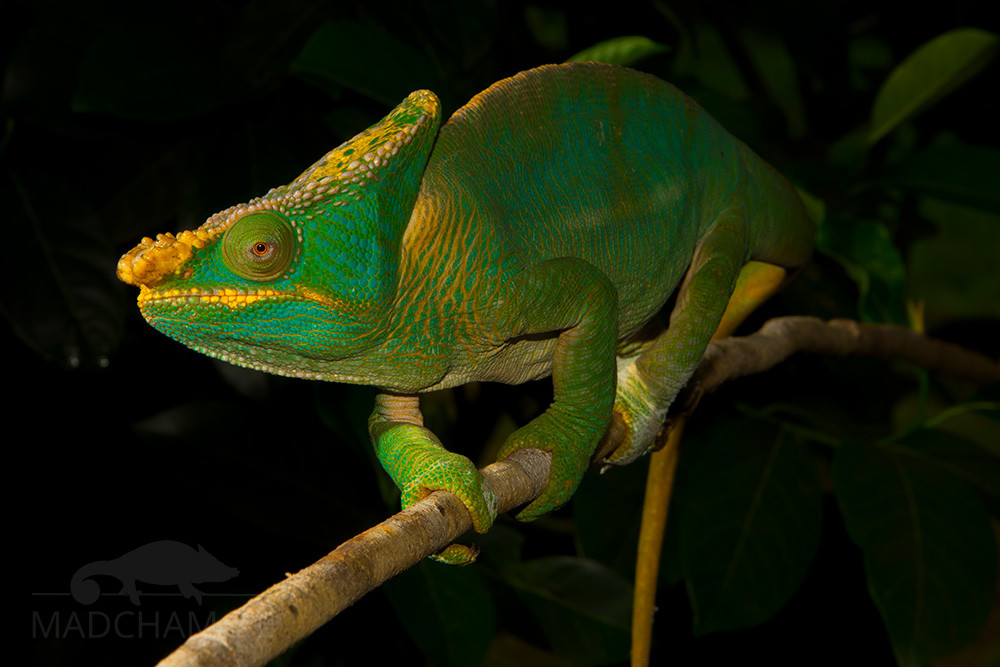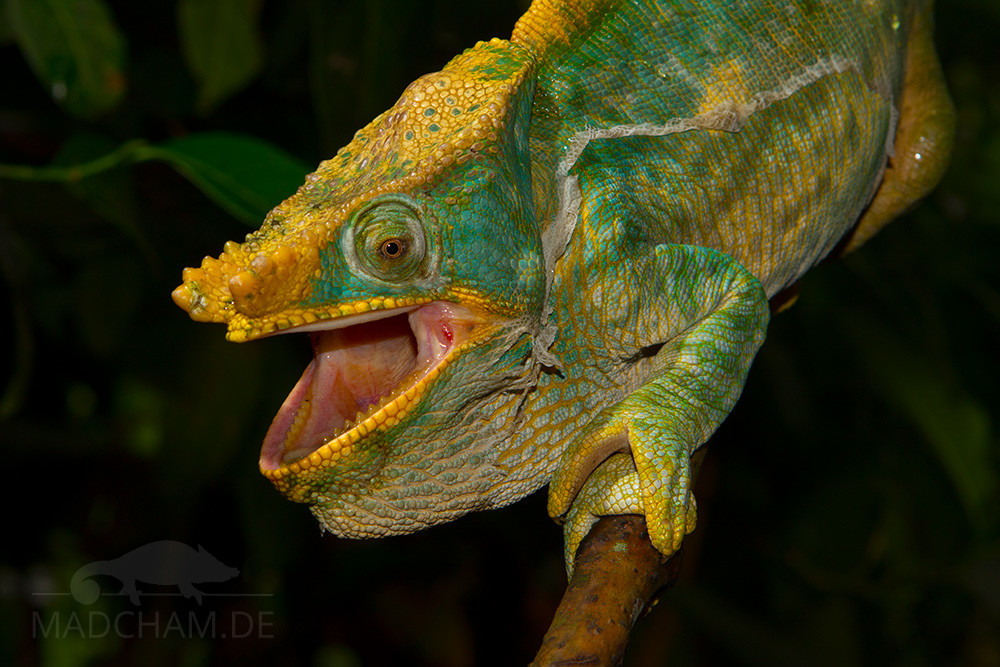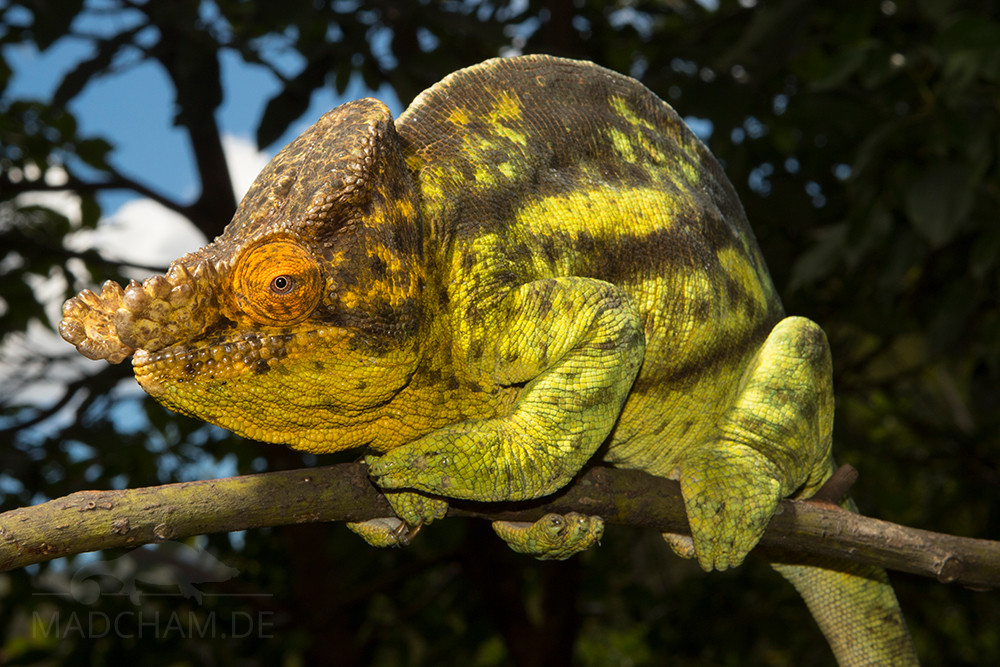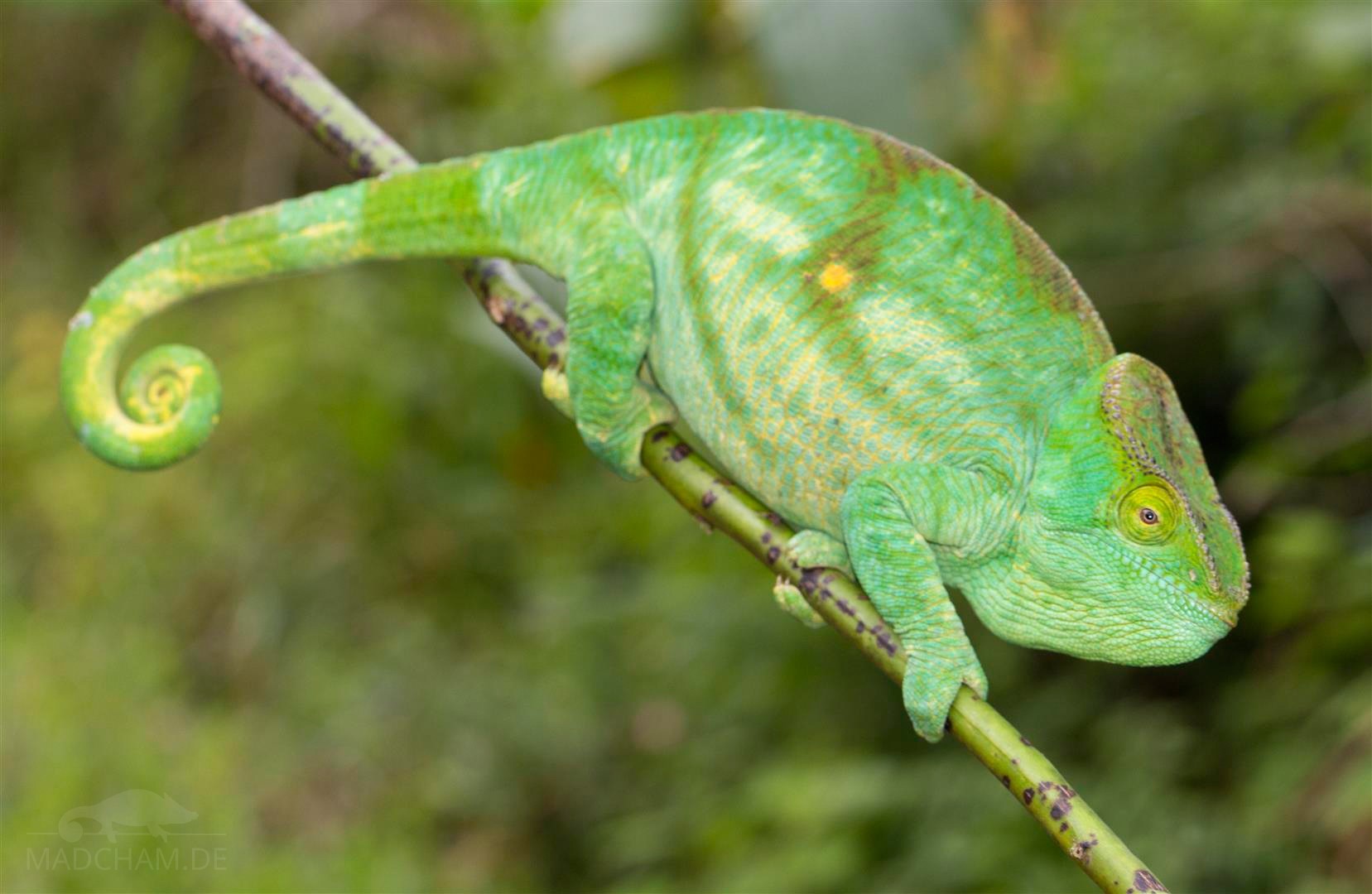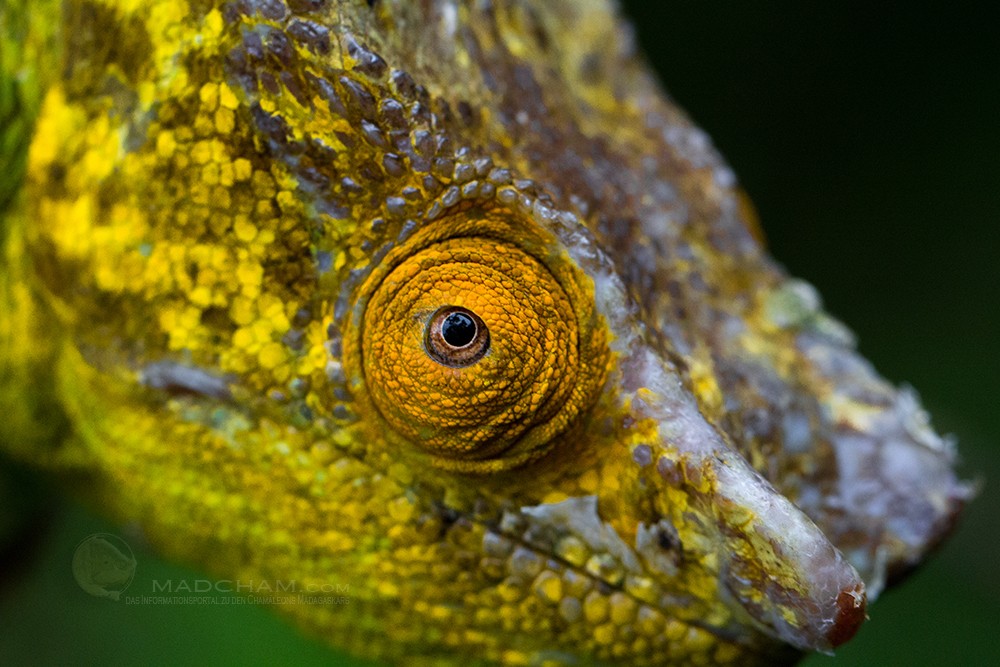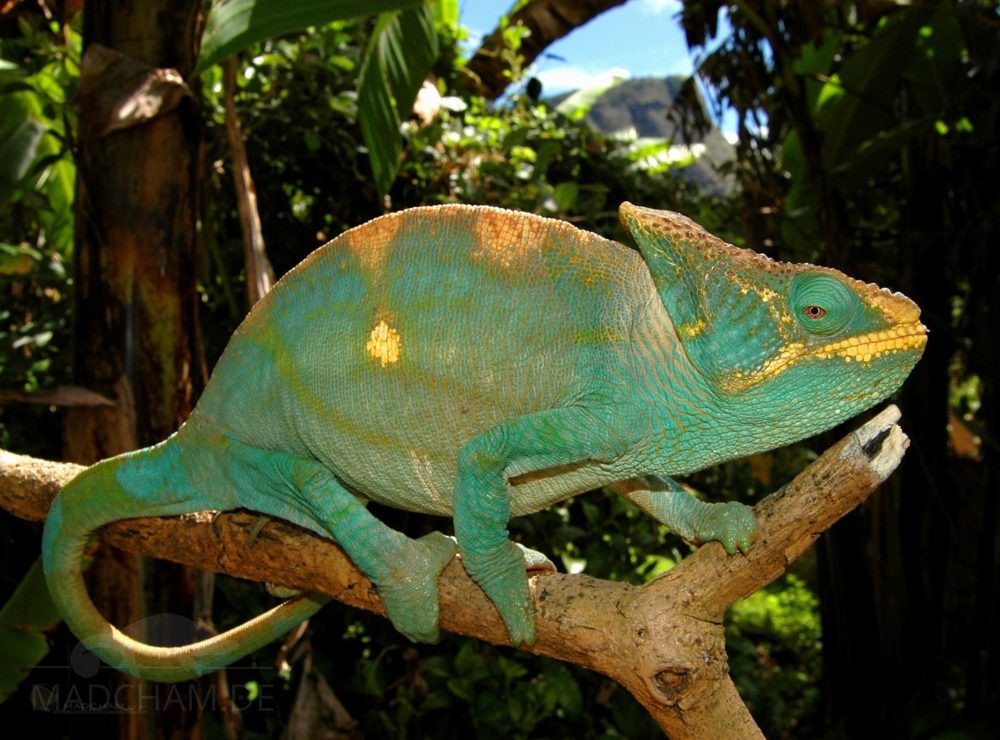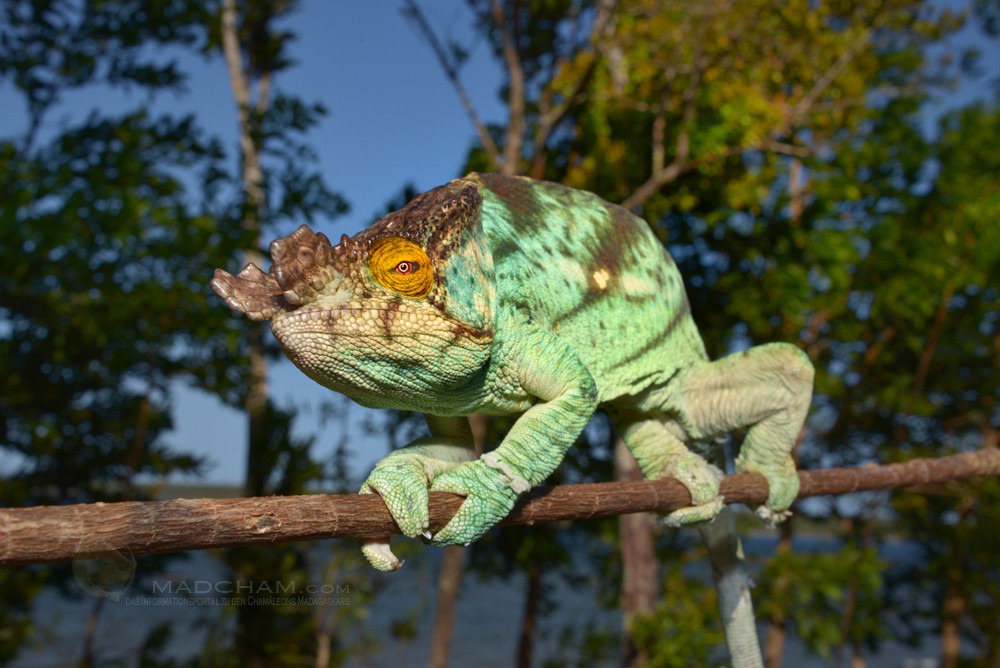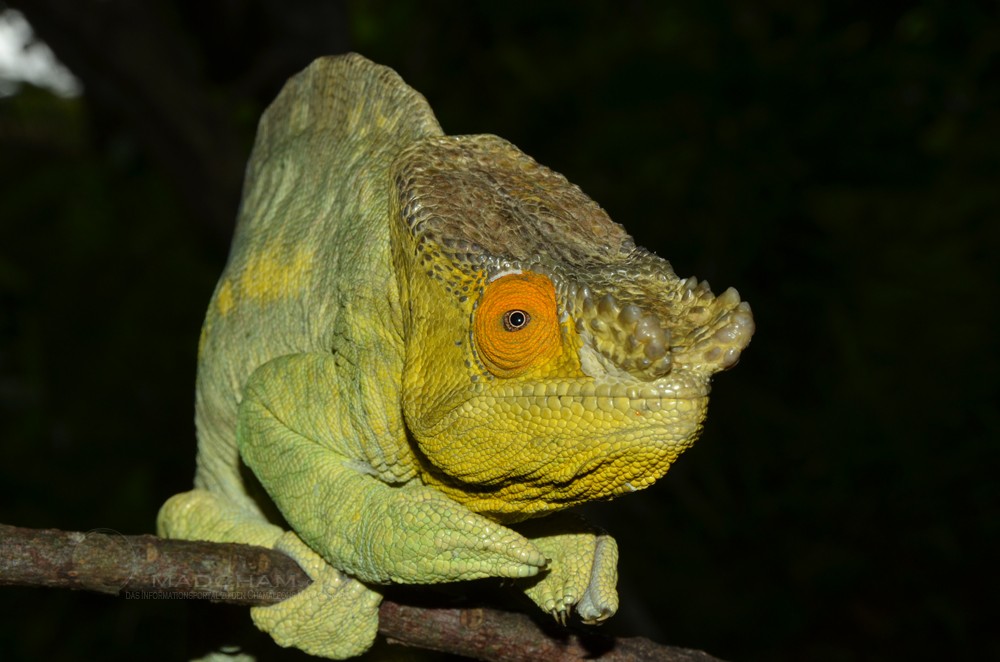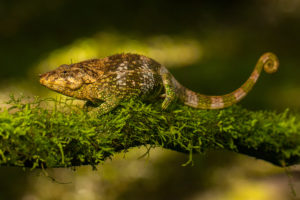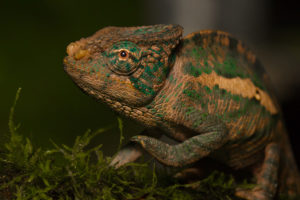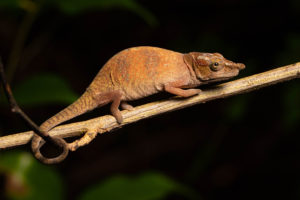2011-13 no specimens, 2014-24 each 300 specimens for legal export
First description:
(Cuvier, 1824)
Origin of the species name:
The French zoologist and paleontologist Georges Léopold Chrétien Frédéric Dagobert Baron Cuvier founded the largest anatomical collection in Europe at the University of Paris (France). His collection included bones of Calumma parsonii parsonii from Madagascar, which he described. He dedicated the species to the Irish physicist and antiquarian James Parsons, who had already mentioned the chameleon in one of his writings in the 18th century under the name Chameleonis rarissima. Actually, the species should have been called Calumma parsonsi. However, the “s” was lost somewhere and is no longer used today.
Distribution:
Calumma parsonii parsonii inhabits the lowland rainforests of eastern Madagascar. This species has often been described as pure rainforest species, but we have seen most animals in coffee plantations and not inside the primary forest. Those individuals we found in mountain regions as well as those we discovered in lowland forests always were nearby rivers, although they surely do not live directly besides water or above it. You can find more information about habitats including climate data and pictures in our section “Colour variations of Calumma parsonii parsonii“. In the rainforests of Analamazaotra, there is another subspecies of Calumma parsonii, the sister species Calumma parsonii cristifer.
Appearance and size:
With partially more than 70 cm total length, this chameleon is really huge. Males have two large nose appendages that females lack. Coloration is also prettier in males, females mostly are bright green or turquoise. This chameleon species has different color variations. Up to date, four are known and we do not think there are more: Yellow lip, orange eye, green giant and yellow giant.
Life Cycle:
Calumma parsonii parsonii hatch after an incredibly long incubation period, for which the species is notorious. Parsons chameleon eggs lie in the ground for an average of one and a half years (18-24 months). Only with the onset of the rains of the third rainy season is hatching initiated. And like everything else in Parsons, sexual maturity takes a rather long time: the animals are only sexually mature at an estimated two or three years. Mating occurs primarily at the beginning of the rainy season. At the end of the rainy season, between March and April, the females lay their eggs. Between 20 and 50 eggs are carefully buried and then left to fend for themselves. Calumma parsonii parsonii lives up to nine years in Madagascar, according to research. In captivity, Parson’s chameleons can live as long as 15-20 years.

